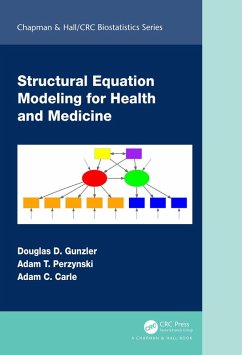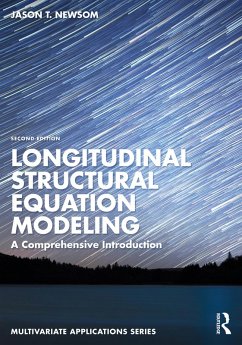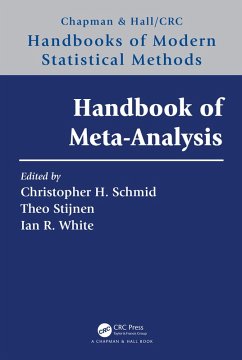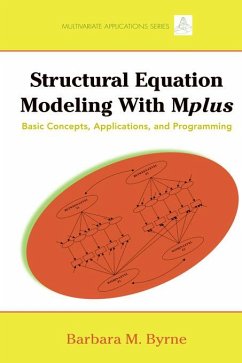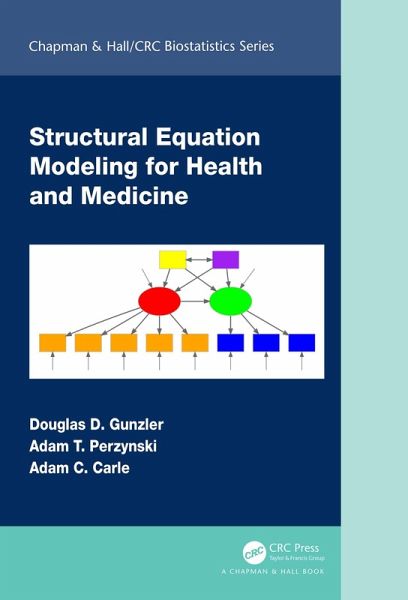
Structural Equation Modeling for Health and Medicine (eBook, PDF)
Versandkostenfrei!
Sofort per Download lieferbar
45,95 €
inkl. MwSt.
Weitere Ausgaben:

PAYBACK Punkte
23 °P sammeln!
Structural equation modeling (SEM) is a very general and flexible multivariate technique that allows relationships among variables to be examined. The roots of SEM are in the social sciences. In writing this textbook, the authors look to make SEM accessible to a wider audience of researchers across many disciplines, addressing issues unique to health and medicine.SEM is often used in practice to model and test hypothesized causal relationships among observed and latent (unobserved) variables, including in analysis across time and groups. It can be viewed as the merging of a conceptual model, p...
Structural equation modeling (SEM) is a very general and flexible multivariate technique that allows relationships among variables to be examined. The roots of SEM are in the social sciences. In writing this textbook, the authors look to make SEM accessible to a wider audience of researchers across many disciplines, addressing issues unique to health and medicine.
SEM is often used in practice to model and test hypothesized causal relationships among observed and latent (unobserved) variables, including in analysis across time and groups. It can be viewed as the merging of a conceptual model, path diagram, confirmatory factor analysis, and path analysis. In this textbook the authors also discuss techniques, such as mixture modeling, that expand the capacity of SEM using a combination of both continuous and categorical latent variables.
Features:
As SEM experts situated among clinicians and multidisciplinary researchers in medical settings, the authors provide a broad, current, on the ground understanding of the issues faced by clinical and health services researchers and decision scientists. This book gives health and medical researchers the tools to apply SEM approaches to study complex relationships between clinical measurements, individual and community-level characteristics, and patient-reported scales.
SEM is often used in practice to model and test hypothesized causal relationships among observed and latent (unobserved) variables, including in analysis across time and groups. It can be viewed as the merging of a conceptual model, path diagram, confirmatory factor analysis, and path analysis. In this textbook the authors also discuss techniques, such as mixture modeling, that expand the capacity of SEM using a combination of both continuous and categorical latent variables.
Features:
- Basic, intermediate, and advanced SEM topics
- Detailed applications, particularly relevant for health and medical scientists
- Topics and examples that are pertinent to both new and experienced SEM researchers
- Substantive issues in health and medicine in the context of SEM
- Both methodological and applied examples
- Numerous figures and diagrams to illustrate the examples
As SEM experts situated among clinicians and multidisciplinary researchers in medical settings, the authors provide a broad, current, on the ground understanding of the issues faced by clinical and health services researchers and decision scientists. This book gives health and medical researchers the tools to apply SEM approaches to study complex relationships between clinical measurements, individual and community-level characteristics, and patient-reported scales.
Dieser Download kann aus rechtlichen Gründen nur mit Rechnungsadresse in A, B, BG, CY, CZ, D, DK, EW, E, FIN, F, GR, HR, H, IRL, I, LT, L, LR, M, NL, PL, P, R, S, SLO, SK ausgeliefert werden.




